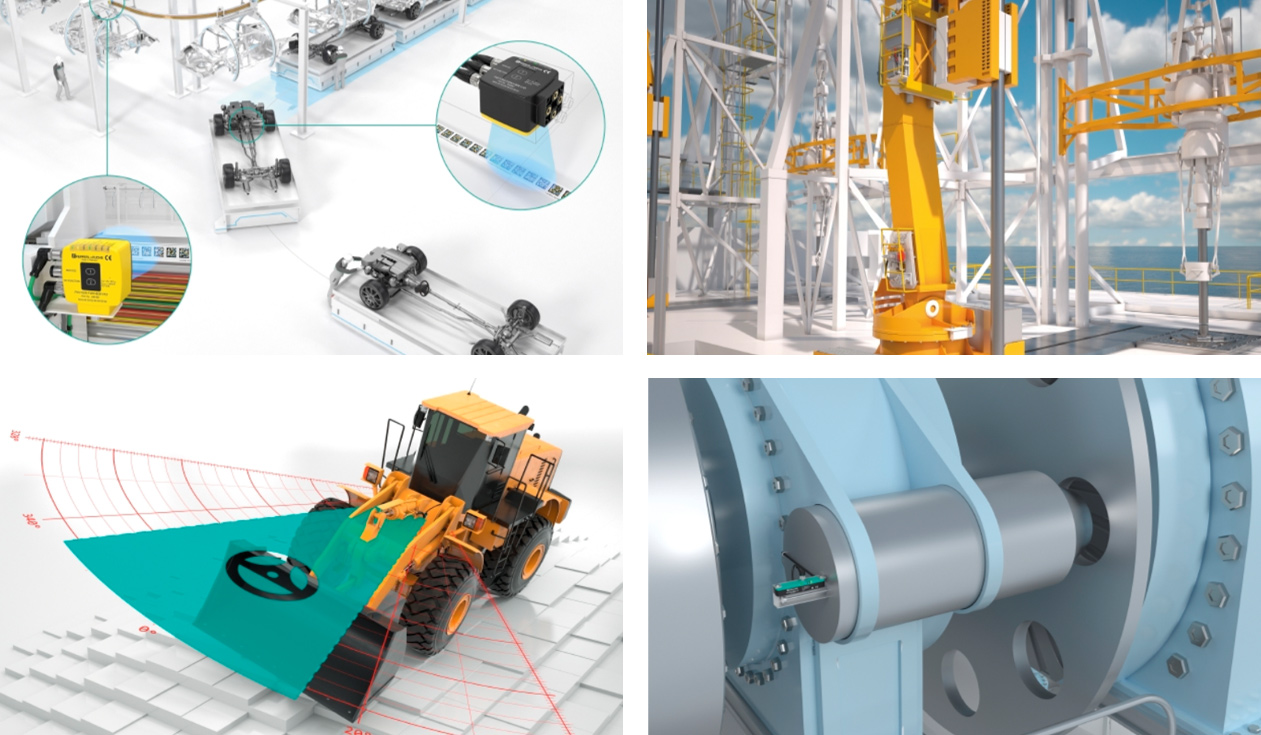Different Types of Positioning Systems in Automation
Content of This Article
Different Types of Positioning Systems in Automation
In the automation world, many different types of positioning systems are available. Whether mechanical, optical, magnetic, ultrasonic, inductive, camera-based systems, or a combination of technologies, determining which of these is effective for your positioning application is critical to the success of your automated processes.
Mechanical Systems
When moving something by means of electrics, hydraulics, or pneumatics, knowing the position of the parts being moved is imperative. Attaching cable pulls to parts provides mechanical position feedback for linear length, but a rotary encoder or potentiometer for the electrical output is also needed. Cable pulls can be installed in tight, dirty spaces where other technologies such as optical or ultrasonic sensors have difficulties. Up to 60 m long, cable pulls also come with pulley accessories that allow positioning at different angles or around corners. They are commonly used in scissor lifts and boom extensions.

Cable pulls provide mechanical feedback for linear lengths.
Another technology that uses mechanical and electrical methods is MEMS, or microelectromechanical systems. These inclination and acceleration sensors accurately measure the gravitational acceleration force applied to the micromechanical elements. Angular vector force can be calculated and used for inclination or tilt feedback. MEMS are used when extending the boom on a utility truck, for example. The device confirms that the truck is level so the boom can be safely extended to the maximum length.
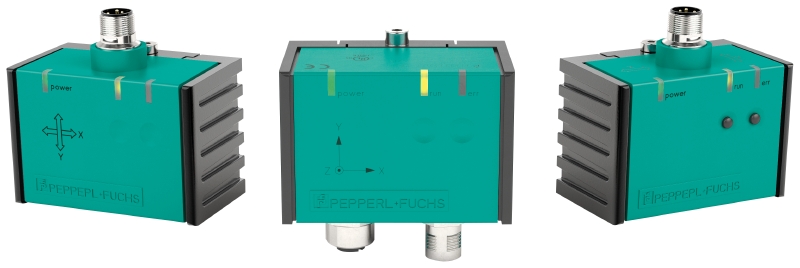
Inclination and acceleration sensors use MEMS for position feedback.
Camera-Based Systems
2-D camera-based positioning systems such as the PXV and PCV Data Matrix positioning systems for noncontact linear and absolute positioning use Data Matrix codes to position vehicles along a track in the X-axis. Dedicated camera-based systems like the position guided vision (PGV) use Data Matrix codes and colored lanes for route tracking. This system outputs position in two axes, X and Y, and provides 360 degrees of angular feedback. Cranes, AMRs, monorail conveyors, and other applications use these systems for precise, long-range position tracking

PXV and PCV series Data Matrix positioning systems for linear tracking of X, Y-axis.
In addition to the use of DataMatrix code tapes, dedicated camera-based systems such as Position Guided Vision (PGV) enable tracking of a defined course on the ground based on a color track or using DataMatrix tags. The submillimeter-accurate positioning of driverless transport vehicles is based on the position information provided by the PGV in the X and Y directions. In addition, a determination of the vehicle’s angle of rotation with respect to the track on the ground is performed.
Applications include autonomous vehicles from the logistics sector to large driverless transport systems in automotive or aircraft production.

PGV positioning systems use Data Matrix code tape or colored lanes for AGV guidance in two axes (X, Y) and 360 degrees of angular feedback.
Optical Positioning Systems
A few different types of products such as the WCS position encoding system use optical technology for absolute positioning. A slotted optical read head can achieve absolute positioning by reading a code rail. The read head is noncontact and can be set up in long linear or curved paths. With the addition of a few accessories, this slotted optical read head can be used in harsh environments. Applications include elevators, cranes, and galvanizing tanks.
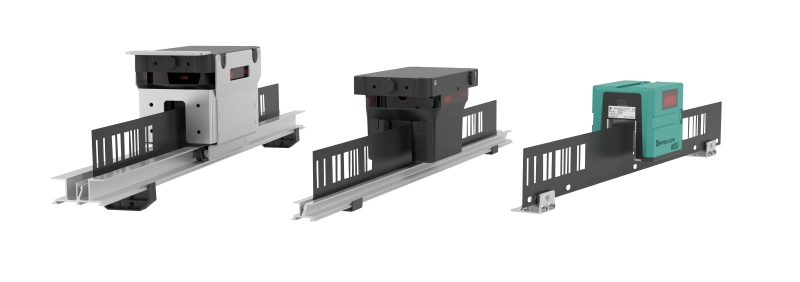
The WCS position encoding systems achieve absolute positioning especially over long distances.
Rotary encoders can also use optical or magnetic sensing to monitor velocity, position, angle, and acceleration. Encoders are available in different variants for optimal integration into the respective application. These include different mechanical and electronic connection options including a wide selection of accessories.
Automotive, factory automation, mobile equipment, and material handling are just a few target industries that can benefit from rotary encoders
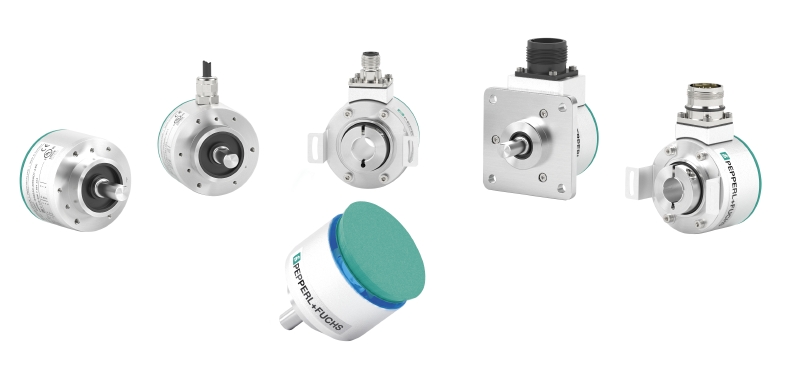
Incremental rotary encoders using optical sensing technology for precise position feedback.
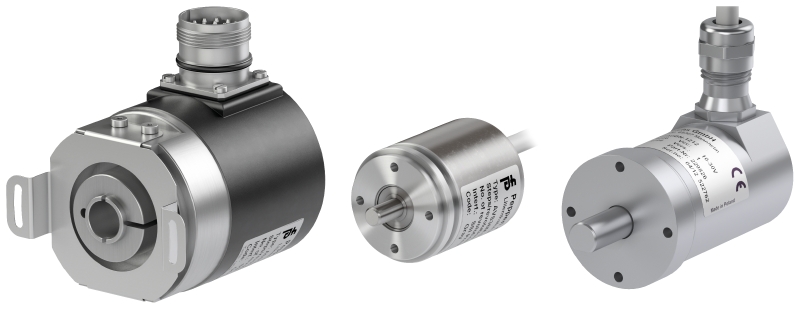
Magnetic rotary encoders are extremely rugged and precise due to their magnetic detection principle.
Inductive Positioning Systems
Noncontact inductive technology detects position using a few different configurations. One sensor housing can be combined with one inductive coil for discrete or analog output. Alternatively, one sensor housing can be combined with many inductive coils to get linear or rotary position. The inductive positioning sensors are available in multiple versions and lengths, which makes installation easy.
Potential applications for inductive position measurement include valve actuator position, dancer/web control, and knife gate valve position.
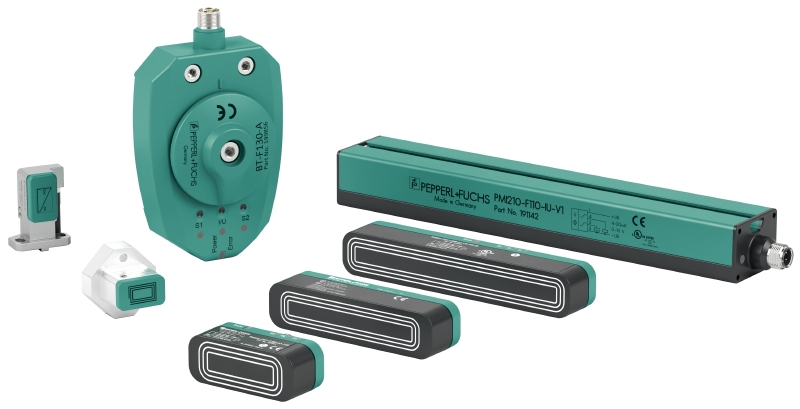
Inductive positioning systems provide noncontact linear or rotary position feedback.
With the growing need for position feedback and autonomous functionality, these positioning system technologies play a vital role in the world of automation. Whether you need to monitor AGV, valve, or crane position, one or more of these systems can be used to achieve the desired results for your unique application.
Are you looking for the right solution for your application? Contact us!
More Information
- Cable Pulls
- Inclination and Acceleration Sensors
- Camera-Based Linear Positioning (PCV, PXV)
- Position Guided Vision (PGV)
- WCS position encoding system
- Rotary encoders
- Optical Incremental Rotary Encoders
- Magnetic Incremental Rotary Encoders
- Inductive Positioning Sensors
- safePXV and safePGV
- Magnetic Rotary Encoder
- Optical Linear Positioning (WCS)
- Positioning Systems
- Blog post: PXV versus PCV – What Are the Differences?
Subscribe to our newsletter and receive regular news and interesting facts from the world of automation.
